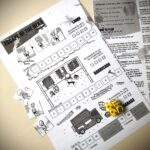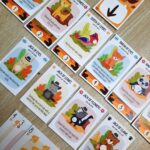Mini Rogue | A roguelike 9-card Microgame
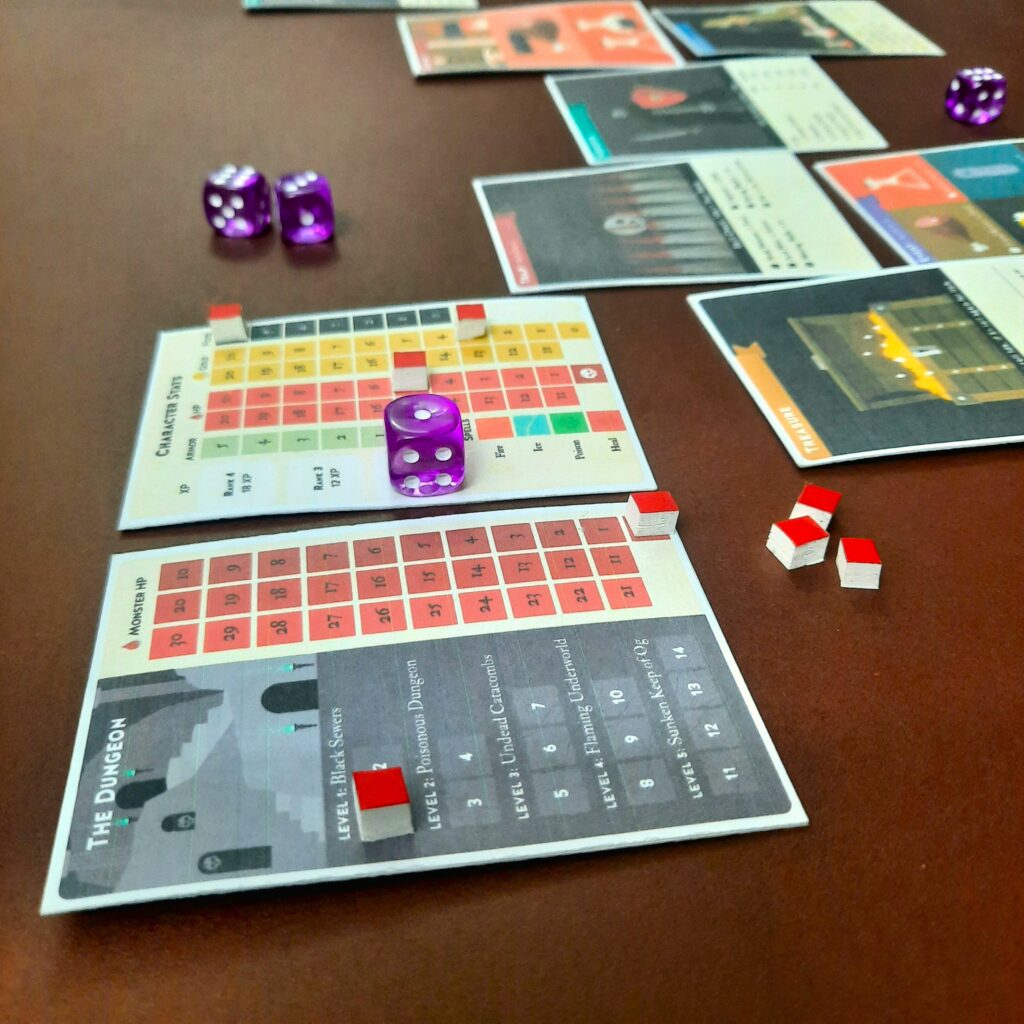
Monsters. Shady merchants. Mysterious rooms and dungeons. Potions and spells.
A cruel journey. All for the ruby named OG’s Blood, located at the deepest end of the dungeon.
Are you in? You know you are.
Say hello to Mini Rogue: a Roguelike Microgame! You are looking forward to a packed solo game that offers quite an experience if dungeon crawl is your thing. Did I say packed? Yes. That’s because this 9-card game offers much more depth than microgames usually do. It’s like carrying multiple levels of a dungeon in your pocket!
Paolo Di Stefano and Gabriel Gendron designed the game in 2016 and were honored with the Best New Designers award as part of the 2016 9-Card Nanogame Design Contest.
Now that you know my hype for the game is justified, let’s get to know the game.
All you need to play the Mini Rogue Microgame
To flip dimensions and enter the dungeon, all you need is:
+ 9 Cards
+ 8 small tokens (preferably cubes, of 8mm or less)
+ 4 D6 dice
The cards are both-sided, for which you need to print 2 sheets in total. I recommend printing them on cardstock papers, cutting them out, and assembling them nicely in card sleeves.
What are the cards representing? 7 out of the 9 cards are rooms that you will encounter in each turn of the game. You will go through a minimum of 4 to a maximum of 5 rooms on every turn. The rest of the two cards are for tracking your health, XP, armor, gold, food, spells, monster’s health, and the 14 dungeon areas. You will use the small tokens to track each of them. I take pride in my craftsmanship of neatly cutting cubes made of PVC, so it wasn’t that difficult for me. You can use a wide range of things as a token, as long as they are small and do not wobble around.
You also have the option to print the tracking cards in a larger size (included in the game file), but for ease of storage and portability, I personally prefer sticking to the compact 9-card format.
You start the game with one D6 dice and may end up having up to 4 of them to combat the monsters. The more XP you gain, the higher the chances of getting more dice, and the more likely you are at taking down monsters!
With the game components sorted out, it’s time to learn the game through a handy playthrough video. The manual for the game is pretty well built, but I also learned a lot from the gameplay video of Lone Adventurers. Make sure to check it out, I provided the video at the end of this article.
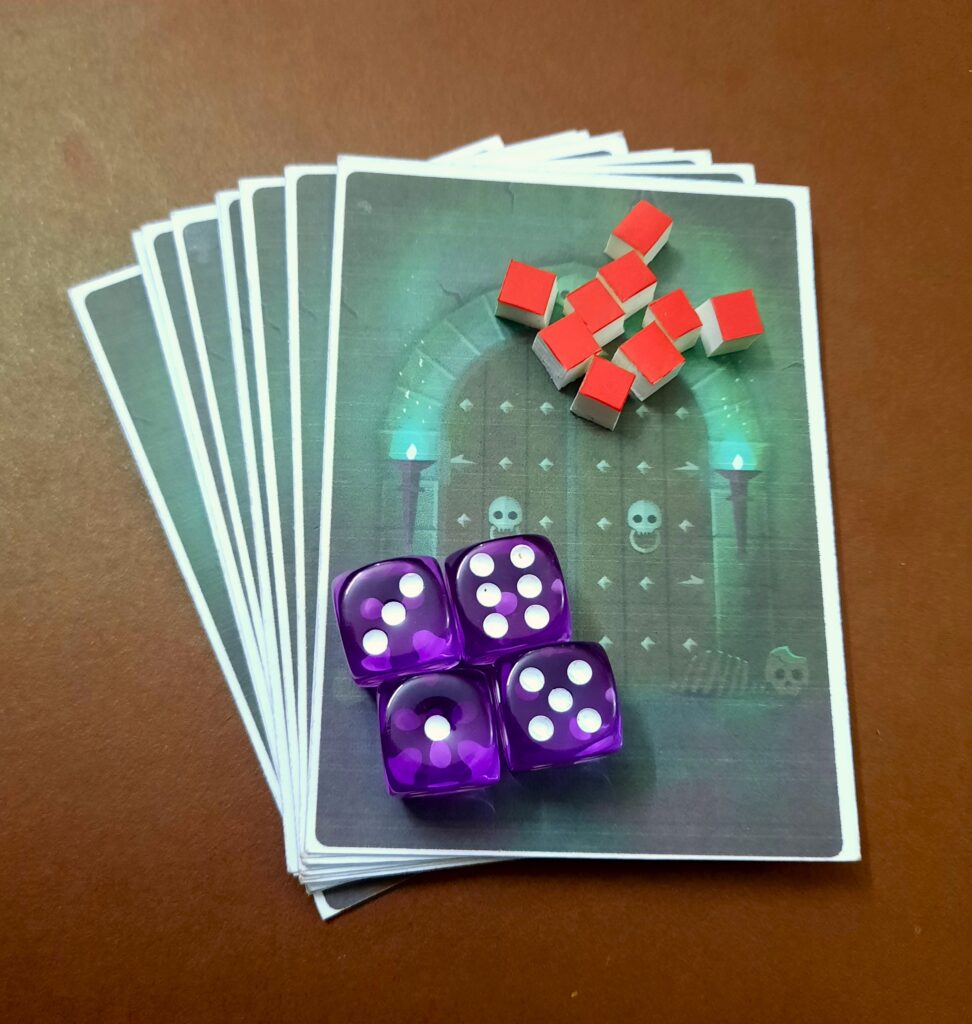
My take on Mini Rogue
Punishing or challenging?
The pocket-sized game offered much more depth than I’d initially expected. Tweaking with 5 different parameters to upgrade myself (XP, HP, food, gold, and spells), watching the monsters growing powerful as the levels progressed, and knowing when to/not to fall for traps or fight monsters- all of that condensed into a microgame created a refreshing experience.
The game is by no means easy. You cannot win by simply going with the flow. But with the right strategy, and a little favor from the God of Dice, you can conquer this otherwise highly challenging game. Which takes me to the next point!
Plenty of room for luck and strategy
Before trying the game, I came across multiple posts in BGG forums highlighting that the element of luck is quite prominent. While I can’t disagree with the aspect that a series of poor dice rolls can be disastrous for players, I also cannot overlook the strategies that can be incorporated on almost every turn of the game.
Be it the liberty of choosing to visit at least 2 out of 4 rooms on every round, picking which stats to upgrade, or deciding when to/not to fight monsters- there are moments where your actions will inevitably shape up the fate of the game.
Experience Enhancer
This might take the game beyond its solo experience, but I absolutely loved stepping into the role of game master, guiding and navigating my friends through the game when they played it for the first time. Much to my delight, they also preferred having a person around who did a little bit of roleplay and narration, while also reminding them to adjust game pieces after the end of every round. The game has many moving pieces, and having an experienced player around certainly helps keep things in check.
A little bit of narration, roleplay, and guidance can go a long way!
Speaking of enhancement, the game also has an advanced variant, along with expansions that take the game beyond its 9-card realm. I am yet to try that since I am finding the 9-card microgame version quite repeatable. For now!
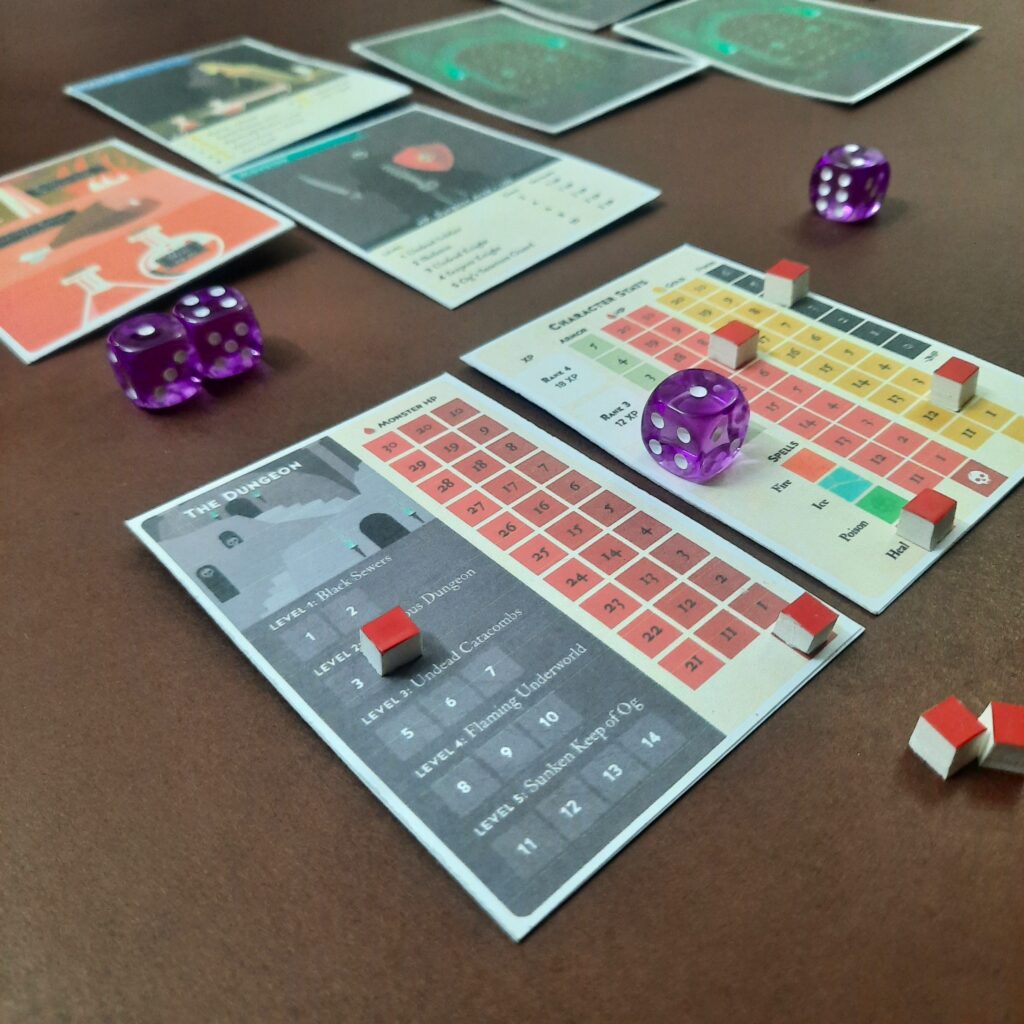
Watch out though!
I mentioned this in my review for One Card Dungeon (another dungeon crawl), and the need to point it out is even more pressing for Mini Rogue.
The game has 9 cards, 4 dice, and 8 tokens; don’t be clumsy! With so many moving pieces (especially in the tracking cards) a little nudge might just be enough to displace the dice and tokens- and that is not how your adventure should end! I’d rather fail on the final level of the game than come to such an abrupt tragic end.
A minute of silence for my friend who over excitedly rolled 3 dice to fight the Boss Monster on Dungeon Area 14- only to watch them fall right on the Character stats card and displace ALL the tokens.
No Phil, I don’t recall you having 20 HP and 5 Armor before the tragedy struck! Start the game again. Sigh.
Where to get the game from
There’s always a price to pay for amazing games! As for Mini Rogue the microgame, the cost is the time required to learn and build the game. The file is available, for free, at Board Game Geek.
Perhaps it’s OG’s blood that holds the cure for your endless losing streak!
Handy Recommendations
Game Overview
Publisher: Corax Games, Mountain Gold Games, and Nuts! Publishing
Designer: Paolo Di Stefano and Gabriel Gendron
Artist: Gabriel Gendron
Number of players: 1
Difficulty level: Medium
Rounds of gameplay needed to learn: 1 to 2 rounds
Game duration: 40 to 60 minutes
Available on: BoardGameGeek
Theme: Dice-Rolling & Roleplay | Dungeon Crawl
Number of pages and color: 2 or 3 (2 for cards, 1 for large tracking card, optional)
Assembling difficulty level: Easy
Lamination: Not necessary. Opt for Card sleeves!
Additional elements required: 4 D6 dice, and 8 small tokens (8mm in size, not too wobbly)
Time to learn: Within 20 to 30 minutes
Travel-friendly: 9/10
Shelving friendly: 10/10
Rating from PnP Time: 9/10

Tasliman is a board game developer based in Bangladesh, with the dream of exploring the world of games and introducing it to anyone new to it. He is the founder of Kraftz, a brand that develops board games commercially, as well as with reputed entities like BRAC and The Gates Foundation.

